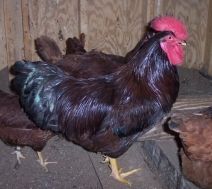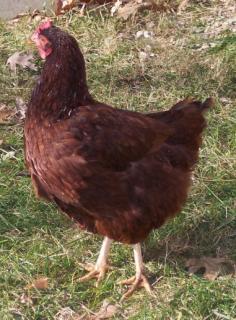Quote:
I do not know where cgmccary got the information or how he or she interpreted the information. In my book buckeye are black tailed red, light brown leghorn are B B Red and dark brown leghorns are partridge. The Dark brown leghorn's E locus is called brown now or e^b; at one time the brown allele was called partridge (e^p) but changed to brown. This partridge is not to be confused with the partridge variety (partrideg rock) which is penciled.
They are correct in that buckeye are not a columbian red- this does not mean they are not columbian restricted; they are columbian restricted. If I am on the same page as cgmccary, a columbian red would be a completely red bird. Buckeye have a black tail-therefore buck eye are black-tailed red.
I believe cgmccary was referring to columbian as in silver columbian (columbian rock)- a gold columbian would be buff columbian ( brahma).
Buckeye genotype- for mahogany red birds
wheaten ey/ey or ewh/ewh, columbian Co/Co, mahogany Mh/Mh, gold s+/s+ or s+/¬_w , yellow skin w/w , yellow shanks due to w, ey and Id , slow feathering K/K or K/_w, dermal melanin inhibitor Id/Id or Id/_W, pea comb P/P r+/r+, genes for red ear lobes, genes for reddish bay eye color, any red under color is due to wheaten and mahogany, genes for brown egg color o+/o+.
I do not know why the back under color (gray) would be different than the under color on the rest of the bird. The body type is similar to a cornish game and has been selected for through breeding.
I do not believe buckeye carry the dark brown gene. The color is different in wheaten and dark brown restricted birds- the color is not the red found in the buckeye but a burnt orange or reddish orange color.
Tim



